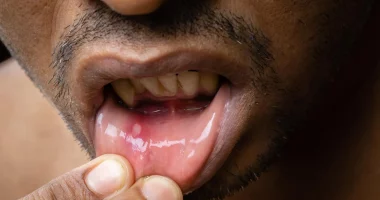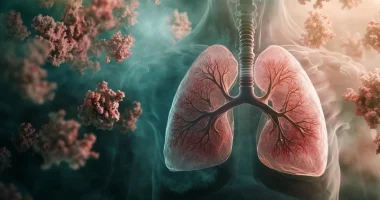Cholangitis refers to the inflammation of the biliary system, which can sometimes be life-threatening. The biliary system is a crucial component of the digestive system, responsible for producing, storing, and secreting bile. This system includes the gallbladder, liver, and bile ducts.
There are various kinds of cholangitis, with acute bacterial cholangitis being the most typical. This condition arises from an ascending bacterial infection in the bile ducts or biliary system, typically led by infected gallstones that block the bile flow. Acute bacterial cholangitis can be severe and pose significant health risks.
In the United States, there are fewer than 200,000 cases reported each year.
Types
Acute Bacterial Cholangitis
It is characterized by bacterial infection and acute inflammation of the biliary system. This condition can stop bile flow and lead to an increase in endotoxins and bacteria in the vascular and lymphatic systems. Endotoxins are toxic substances released by certain bacteria. Acute bacterial cholangitis can result in severe and potentially dangerous complications, like biliary septicemia and liver abscesses.
Primary Biliary Cholangitis
It is a chronic condition that leads to inflammation of the liver’s small bile ducts. This progressive disease deteriorates over time and ultimately leads to the destruction of these bile ducts. As the bile ducts lose their function, bile buildups, resulting in liver damage. This damage can cause cirrhosis, liver scarring, and failure. It is believed to be an autoimmune disease, where the immune system erroneously attacks the healthy cells of bile ducts
Primary Sclerosing Cholangitis
Primary sclerosing cholangitis is another chronic disease that, like primary biliary cholangitis, leads to scarring and inflammation of the bile ducts. However, it affects both the bile ducts inside and outside the liver. This condition progressively narrows or stops the bile ducts, leading to bile buildup within the liver, which can lead to liver damage and certainly progress to liver failure and cirrhosis. Primary sclerosing cholangitis is also thought to be an autoimmune disorder.
Symptoms
Cholangitis presents with a range of symptoms, including general malaise, fever, and sweating, often accompanied by shivering and chills. Patients may also experience abdominal pain, itchy skin, pale stools, jaundice, and diarrhea. In some cases, cholangitis can lead to joint pain, depending on the type of the condition.
Additionally, cholangitis can result in a bile duct infection, which may cause symptoms like chills, fever, pain in the upper right abdomen, and the development or worsening of jaundice.
Causes
Acute bacterial cholangitis results from a biliary system’s bacterial infection. This infection typically arises when bile ducts are obstructed, most commonly due to a gallstone entering the ducts—a condition known as choledocholithiasis.
The exact cause of primary biliary cholangitis remains uncertain, though it is widely believed to be an autoimmune disorder. Research recommends that genetic factors may predispose certain individuals to get the condition. For those with particular genetic markers, environmental factors might activate an autoimmune response, where the immune system triggers the small bile duct cells. Potential environmental triggers include smoking, particular infections, and contact with some chemicals.
The cause of primary sclerosing cholangitis is also not fully understood, but it is thought to be an autoimmune disorder as well. Some studies indicate that various factors may contribute to the growth of this disease, including modifications in gut microbiota, genetic factors, bile acids leading to injury to the bile ducts, and immune system abnormalities.
Cholangitis Diagnosis
Diagnosing cholangitis typically involves several steps, including evaluating personal medical history and also family and close relatives, conducting a physical examination, and performing various medical tests.
Physical Examination
During a physical exam, the healthcare provider may tap or press on different parts of the abdomen to identify any sensitive or painful spots, especially on the upper right side. They will utilize a stethoscope to listen to abdominal sounds, check for enlarged liver or spleen, and look for symptoms of jaundice or other signs of liver failure and cirrhosis. Additionally, the healthcare provider may inspect for any scratch marks caused by irritated skin.
Medical History
When assessing an individual’s and family’s medical history, a healthcare provider may inquire about a range of factors. This includes any history of autoimmune diseases, inflammatory bowel disease such as ulcerative colitis, family history of cholangitis, past infections, and regular contact with certain chemicals.
Imaging Tests
Imaging tests are important in diagnosing cholangitis. The primary imaging test is an abdominal ultrasound, which utilizes sound waves to create images of the gallbladder and liver. Ultrasound can reveal dilation of the bile ducts, thickening of walls of the bile duct, and the presence of gallstones or pus. In some cases, other imaging tests like MRI scans or CT scans may be used to further evaluate the condition.
Liver Biopsy
For certain patients, a liver biopsy may be performed. This involves taking a small tissue sample from the liver, which is then analyzed using a microscope. The biopsy can reveal other liver conditions, and the extent of liver damage, and help confirm the initial diagnosis.
Blood Tests
Blood tests are also employed to help diagnose cholangitis. A doctor takes a blood sample and analyses it in a lab. Key indicators may include elevated levels of anti-mitochondrial antibodies, liver enzymes, and cholesterol.
Colonoscopy
In cases of primary sclerosing cholangitis, a colonoscopy may be recommended. This procedure involves inserting a small tube with a camera into the large intestine to check for signs of IBD, which is sometimes associated with this type of cholangitis.
Cholangitis Treatment
The treatment approach for cholangitis depends on the type and severity of the condition.
For acute bacterial cholangitis, healthcare professionals typically use a combination of intravenous therapy and antibiotics to address the infection. In some cases, bile duct drainage may be necessary to relieve obstruction and remove infected material. Early initiation of treatment generally leads to a positive outcome; however, significant delays can make the condition life-threatening.
For primary biliary cholangitis, the Food and Drug Administration has approved the use of ursodiol. While ursodiol doesn’t decrease the disease, it can gradual its progression and assist stop further liver damage.
In the case of primary sclerosing cholangitis, no standard treatment is currently available. Management usually focuses on alleviating specific symptoms associated with the disease.
When to Speak with a Healthcare Provider
If you experience any signs of cholangitis, it is important to consult a healthcare provider immediately. Prompt medical attention allows for an accurate diagnosis and the development of an appropriate treatment plan.
Early determination and treatment of acute bacterial cholangitis are essential for improving the prognosis. Delays in receiving treatment can lead to serious, potentially life-threatening complications.
Summary
Cholangitis is an inflammation of the bile ducts, and it can be acute bacterial, primary biliary, or primary sclerosing cholangitis. Acute bacterial cholangitis is caused by bacterial infection, often following bile duct obstruction by gallstones, and can be life-threatening if not treated early. Primary biliary cholangitis is a chronic autoimmune disease managed with ursodiol to slow progression, while primary sclerosing cholangitis has no standard treatment and focuses on symptom management. Diagnosing cholangitis involves medical history, physical exams, imaging, blood tests, liver biopsy, and sometimes colonoscopy. Early consultation with a doctor is crucial for effective treatment and improving outcomes.









